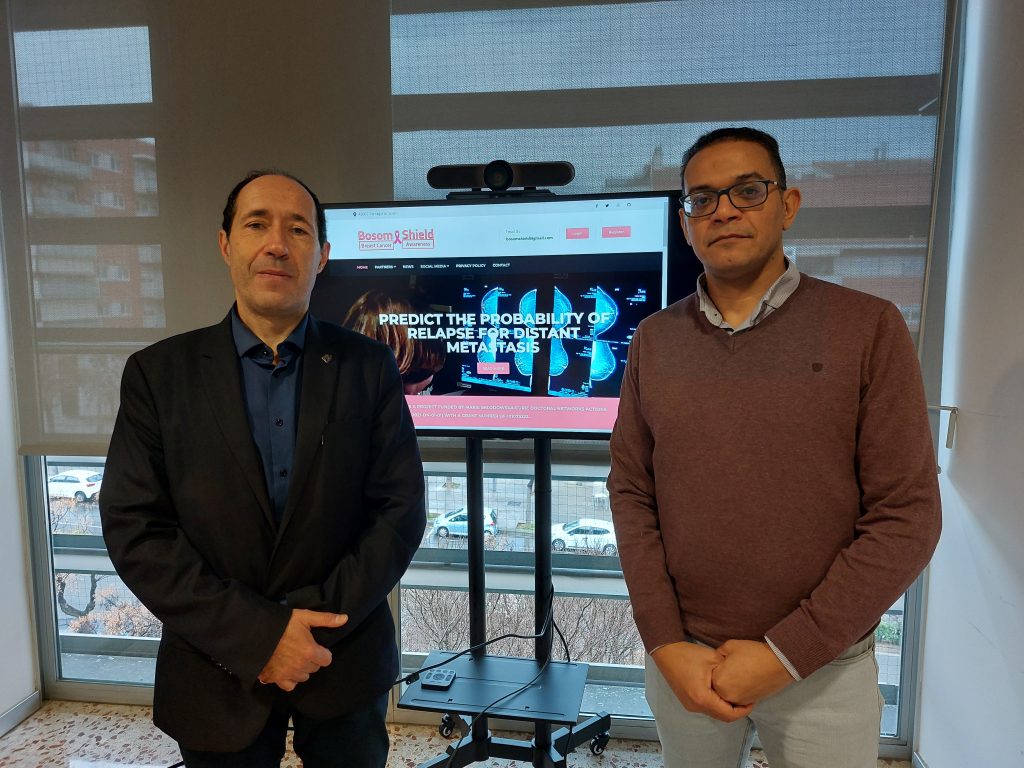22/02/2023
The URV is coordinating an international project to improve the detection and prevention of the recurrence of breast cancer
A research group of the Universitat Rovira i Virgili, led by Professor Domènec Puig, classifies types of breast cancer and predicts the likelihood of metastasis

A research group of the Universitat Rovira i Virgili, led by Professor Domènec Puig, classifies types of breast cancer and predicts the likelihood of metastasis
The Universitat Rovira i Virgili University is the coordinator of an international project that will play a key role in the detection and prevention of breast cancer. The BosomShield project is developing a software platform that will analyse images to classify the different types of breast cancer and predict the likelihood and probability of recurrence by metastasis. It is led by the URV’s Intelligent Robotics and Vision Laboratory, headed by the researcher Domènec Puig and part of the ITAKA research group of the Department of Computer Engineering and Mathematics (DEIM). It also enjoys the collaboration of universities, hospitals, biomedical research groups and European, Asian and North American technology centres. It is funded by “Marie-Sklodowska Curie Actions “(Horizon MSCA), the European Union’s benchmark programme for doctoral and postdoctoral training, and will run until 2026.
“The main novelty of the project is that for the first time it analyses both radiological images (i.e. mammograms, magnetic resonance imaging, etc.) and histopathological images, microscopic images of cells. Until now, these two types of images have been analysed separately, and the fact they are now worked on together makes prediction much more accurate, and makes it possible to go into greater detail about the specific features of tumours, whether they are benign or malignant, and the possibilities of metastasis, of extension beyond the breast, of recurrence”, explains Domènec Puig.
The project is divided into five sub-projects, each of which is the responsibility of one of the partners, and includes the different phases of the process: the analysis of radiological images, the analysis of histopathological images, the prediction of the chances of relapse by combining the two types of images and the design of the platform. The heads of each subproject are doctoral candidates chosen by the participating institutions: “According to European mobility rules, candidates must have lived in the country of each institution for a maximum of one year out of the last three, which leads to a very interesting international exchange,” says Puig.
The URV team is in charge of the first subproject, which aims to “determine the molecular subtype of breast cancer using multimodal radiological images”, as Hatem Rashwan, a researcher at the Laboratory of Intelligent Robotics and Vision and visiting professor at the DEIM, explains: “It is not a simple task, but thanks to deep learning and artificial intelligence, these radiological images enable us to find tumour markers.” Rashwan points out the importance of determining the molecular subtypes of cancer, as “they tell us if the cancer is dangerous or if there can be a relapse within a few years, in this case in collaboration with the Swedish partners.” Domènec Puig explains that the subprojects are designed to be interrelated, with meetings, joint work and a great deal of mobility, and visits by the heads of each project to other institutions.
The Sant Joan University Hospital in Reus and the Verge de la Cinta Hospital in Tortosa are also involved in the project, as is the Pere Virgili Institute for Health Research (IISPV), the Oncological Pathology and Bioinformatics Research Group of which analyses the risk of relapse by metastasis. In this respect, Carlos López, joint head of the group with Marylene Lejeune, states that “it is important to study the risk factors patients have of developing this type of metastasis, because if it occurs it is very likely that they will not survive.”
“In the end, we will all work together to create a platform that can be used for clinical practice in hospitals. This platform will warn the specialist, for example, if there is anything suspicious in a particular patient, so they will be able to make better, more informed and efficient decisions,” says Domènec Puig, whose team has a long history of working on projects to help diagnose breast cancer. In fact, the idea for the project came from the URV, hand in hand with the IISPV. They worked on the proposal and refined it, and then got in touch with other institutions to form the consortium to carry it forward. “This is our great project. It encompasses everything we have done so far and will produce a system that is universal, functional and appropriate,” concluded Puig.
